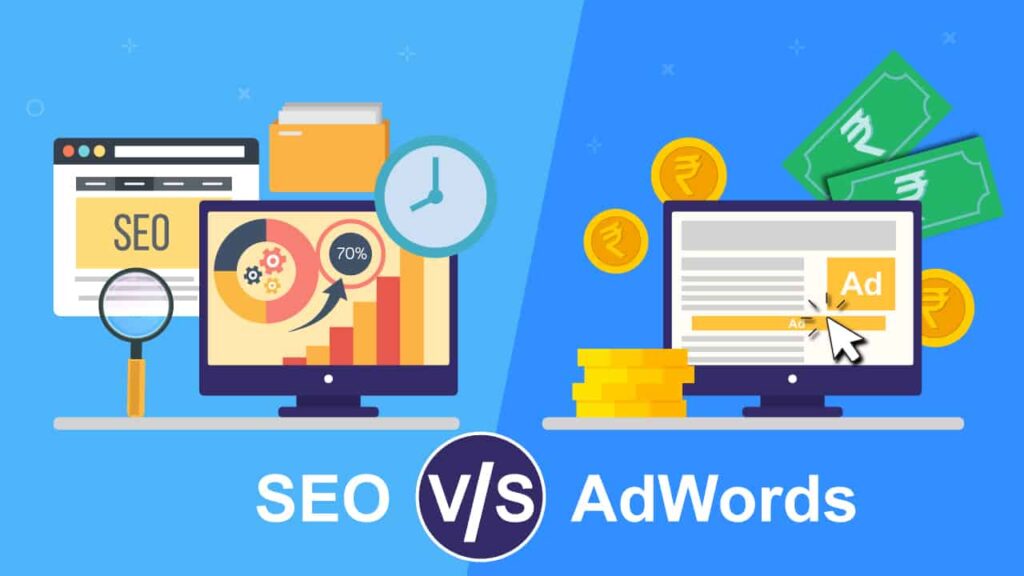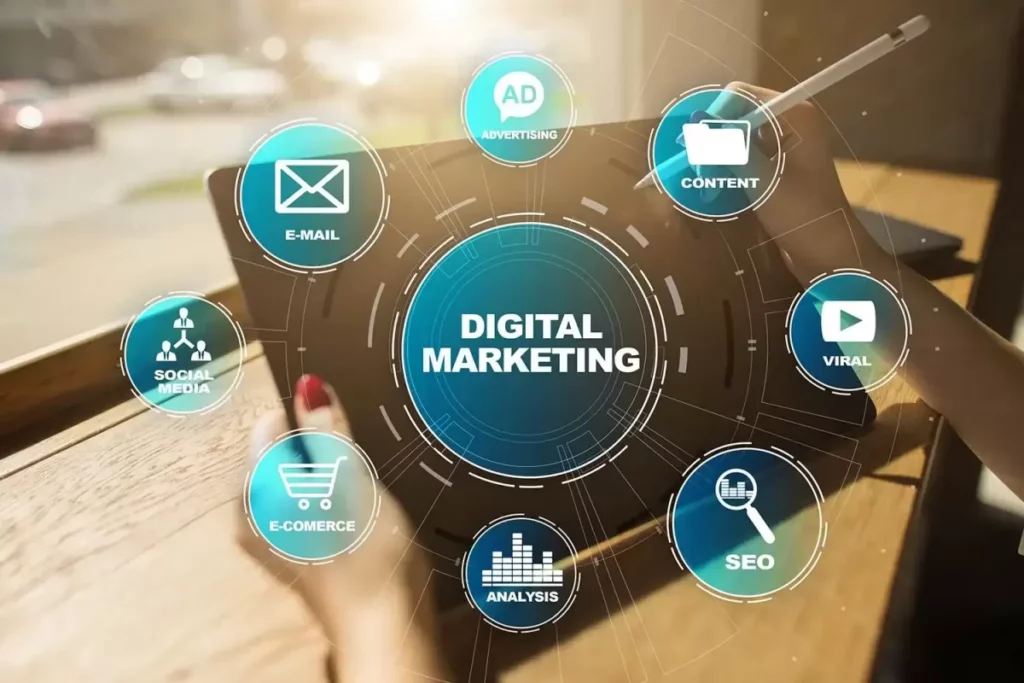In the cutthroat world of e-commerce, attracting customers and driving sales is an ongoing battle. While both SEO for e-commerce (Search Engine Optimization) and Google Ads offer powerful tools, the strategic use of SEO provides a distinct edge for long-term success. This article delves into the advantages of SEO for e-commerce, highlighting its superiority over paid advertising in building a sustainable traffic powerhouse.
Table of Contents
The Power of Organic Visibility
SEO revolves around optimizing your website and content to rank organically on search engine results pages (SERPs). When someone searches for a product or service related to your offerings, your website appears prominently without the need for a paid placement. This organic visibility translates to several key advantages:
-
Cost-Effectiveness: Unlike Google Ads, where you pay for every click, SEO offers a cost-effective way to attract potential customers. Once you’ve invested the time and effort in optimizing your website, the organic traffic keeps flowing without additional per-click fees.
-
Long-Term Sustainability: SEO efforts build momentum over time. As your website ranking improves, you attract more organic traffic consistently. This creates a sustainable traffic pipeline that continues to deliver results even if you adjust your SEO strategy.
-
Increased Brand Credibility: Ranking high on SERPs lends legitimacy and trust to your brand. Consumers perceive websites positioned at the top of search results as reliable and authoritative sources, increasing the likelihood of them converting into customers.
-
Targeted Audience: SEO allows you to target specific keywords relevant to your products and services. This ensures your website reaches the right audience – people actively searching for what you offer, maximizing the potential for conversions.
-
Improved User Experience: SEO best practices often overlap with creating a user-friendly website. Optimizing page loading speed, mobile responsiveness, and content structure not only improves search engine ranking but also enhances the overall user experience, encouraging visitors to explore further and convert.
SEO vs. Google Ads: A Tale of Two Strategies

While Google Ads offers undeniable benefits like immediate visibility and targeted campaigns, it comes with limitations:
-
Costly: The cost of Google Ads can quickly add up, especially for competitive keywords. You constantly need to monitor and adjust your campaigns to maintain a positive return on investment (ROI).
-
Short-Term Focus: Once your ad budget runs out, the traffic flow stops. Google Ads is a great way to launch a new product or run a seasonal promotion, but it doesn’t build long-term brand recognition or organic traffic.
-
Dependence on Platform: You’re beholden to Google’s algorithm and advertising policies. Changes to the platform or increased competition can significantly impact your campaign performance.
Building Your SEO Fortress
Here are some key SEO strategies to implement for your e-commerce website:
- Keyword Research: Identify high-volume, low-competition keywords relevant to your products and target audience. Integrate these keywords naturally into your product descriptions, page titles, and website content.
- Content Marketing: Create high-quality, informative content that educates, entertains, and engages your audience. Blog posts, product reviews, buying guides, and informative articles all provide valuable content for users and search engines alike.
- On-Page Optimization: Optimize your website’s technical structure, page loading speed, and mobile responsiveness. Ensure your product pages are well-structured, easy to navigate, and contain relevant meta descriptions and title tags.
- Link Building: Earn backlinks, or links from high-authority websites, to your website. Backlinks signal to search engines that your website is trustworthy and relevant, boosting your ranking potential.
- Local SEO (if applicable): If you have a brick-and-mortar store or offer local services, optimize your website for local searches. Claim your Google My Business listing, ensure your NAP (Name, Address, Phone Number) is consistent across the web, and build local citations to improve local search visibility.
SEO: A Continuous Journey
SEO is not a one-time fix. Search engine algorithms constantly evolve, and new competitors emerge. Maintaining a top ranking requires ongoing efforts:
- Stay Updated on Algorithm Changes: Keep yourself informed about the latest SEO trends and algorithm updates from search engines like Google.
- Regular Content Creation: Regularly publish fresh, informative content to keep your website active and relevant to search engines and users alike.
- Performance Monitoring: Track your website’s SEO performance through analytics tools. Measure key metrics like organic traffic, keyword rankings, and conversion rates to identify areas for improvement.
The Synergy of SEO and Paid Ads
While SEO offers a long-term, cost-effective solution, Google Ads can be a valuable complementary tool. Consider using paid ads for:
- Targeting New Products: Launch targeted Google Ad campaigns to promote new product offerings or special promotions, driving immediate
- Reaching New Audiences: Use Google Ads to explore new demographics or audience segments you might not be reaching organically through SEO. This can help you test the market for new product lines or expand your brand awareness.
- Remarketing: Leverage Google Ads for remarketing campaigns. Reconnect with website visitors who have shown interest in your products but haven’t converted yet. This can be a powerful way to nudge them towards making a purchase.
The key is to view SEO and Google Ads as complementary strategies. While SEO builds a strong foundation for long-term organic traffic, Google Ads can provide a targeted boost for specific campaigns or reaching new audiences.
SEO: An Investment that Pays Off
Investing in SEO delivers a sustainable return on investment for your e-commerce business. By attracting consistent organic traffic, building brand credibility, and improving user experience, SEO sets the stage for long-term success. While Google Ads offer a quick way to get noticed, SEO builds a loyal customer base and a thriving online presence for your e-commerce store.
Beyond Ranking: The Broader Benefits of SEO
The advantages of SEO extend beyond just ranking high on search results pages. Here are some additional benefits:
- Improved Brand Awareness: As your website ranks higher for relevant keywords, more people will see your brand name in search results. This increases brand awareness and positions you as a thought leader in your industry.
- Enhanced Website Traffic: Effective SEO attracts a steady stream of qualified leads – people actively searching for what you offer. This targeted traffic is more likely to convert into paying customers compared to random visitors from other sources.
- Better Customer Insights: SEO analytics tools provide valuable data on user behavior and search queries. This information helps you understand your target audience better, tailor your content and product offerings to their needs, and ultimately improve your conversion rates.
- Future-Proofing Your Business: SEO best practices often align with creating a user-friendly and informative website. This focus on user experience ensures your website remains relevant and adapts to future search engine algorithm changes.
Conclusion
While both SEO and Google Ads have their place in an e-commerce marketing strategy, SEO offers a distinct edge for building a sustainable and scalable online presence. By investing in SEO, you’ll attract organic traffic, build brand credibility, and establish a long-term competitive advantage in the ever-evolving world of e-commerce. Remember, SEO is a marathon, not a sprint. By consistently optimizing your website and creating valuable content, you’ll cultivate a thriving online store that attracts loyal customers and drives long-term success.
 socialhead
socialhead


